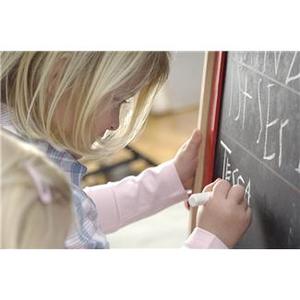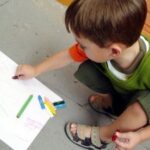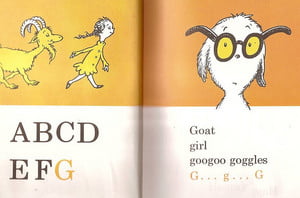Unlike the average 8 year old who you can give them a book to read or a math problem to solve and they can sit down read it and tell you what they don’t understand, a toddler is quite different. They are just learning to read and write, so it won’t be that simple. You’ll need age appropriate supplies and materials to properly teach your child, not only the basics of reading and arithmetic but the basics of learning, itself.
Parents often try to go based on the methods of preschools. This is often a good way to go. However, preschools often have lots of costs and equipment that a small home school family may not be able to accomplish or afford. So how does a parent teach their toddler at home and still prepare them to succeed in learning? It can easily be done when you understand how toddlers learn, they won’t be learning to add overnight so by focusing on the basics and consistently engaging your toddlers is a great way to progress. Here are a few ideas on how to adequately home school your toddler and supplies that will help.
Introduce colors. Get a few colored pencils, markers, crayons, paint and allow your child to experiment with colors. Point out the colors they are using and make secondary colors with primary colors. This makes a fun way to teach your child the names of the colors and allow them to develop their motor skills.
Count objects. Rather than showing them numbers on a page. Allow them to count their crayons, toys, snacks, and puzzle pieces. It may be confusing for them when they first start out because they may confuse the number of an object with its name. However, using different objects should help them with this.
Read dictionaries. I’ve found that one of the most intriguing things for young learners are dictionaries, especially picture dictionaries. They love to ask, “what’s that?” and it helps that the answers are right next to them. These has multiple benefits, not only learning the names of things but also association. They may not be able to read at this point, but when they see a word appearing next to the same image over and over again, they can recognize what these words are when you say them and should be able to learn to read them a lot easier.
Whiteboard writing. Can you remember one of the most impressionable objects in your school’s classroom? It was probably the big whiteboard. The whiteboard is a great tool to use in teaching your child because they can see letters, numbers, shapes and objects written clearly and large enough to show a toddler. You can also allow them to draw on the board themselves and copy you as you write.
Teach music. Children take to music quite well at this age. Giving them a music instrument could have lasting effects on their development. It is important to offer them an instrument that they can actually hold and have the ability to operate. Something like a guitar might be too difficult for them, however a piano, keyboard or violin may allow them to easily hold and play.
You can get creative and make a great deal of projects and lessons from these basic ideas. Try to rotate and introduce new ideas every time you use one of these methods as they are easy to get bored at this stage. Instructing at this age does not have to be difficult but focusing on the basics can be very beneficial in their progress.






